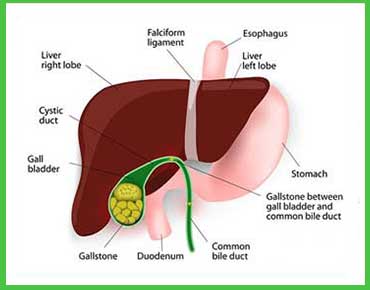Gallstones (cholelithiasis), or gallbladder stones, are cholesterol or bilirubin deposits that harden in the gallbladder and interrupt normal digestion while causing agonizing pain. These stones can be sand-grain-sized or as big as a golf ball and usually become known only when they cause acute pain, nausea, or some disturbance in digestion. Gallstones are maintained by fatty diets, obesity, and genetics. Complications from untreated gallstones may occur, including the possibility of infections, inflammation, and/or rupture of the gallbladder. Thus, early diagnosis means action: lifestyle modifications may be the answer, medication could be used, or possibly surgery would be undertaken to relieve you and save any complications that would have interfered with the smooth working of the digestive system.
What Causes Gallstones?
- Excess Cholesterol in Bile: Everywhere after all too much cholesterol is not an uncommon thing, which may crystallize and form a stone, bringing about its pain and possibly blockage.
- Excess bilirubin production: Conditions of liver disease or infections will cause an excess of bilirubin-another risk factor for the development of gallstones.
- Deficient gallbladder emptying: When the bile is not emptied whatsoever or frequently out of the gallbladder, it becomes concentrated and is relatively prone to form stones.
- Obesity/unhealthy dietary habits: Diets include some with high-fat content, cholesterol, or sugar, with low fiber impact on the composition of bile, thereby facilitating gallstone formation.
- Rapid weight loss: During rapid weight loss, cholesterol in excess is released into the bile by the liver which fosters the formation of stone.
Symptoms of Gallstones:
- Variety of abdominal cramps: Usually, mild to severe attacks of deep pain in the right upper quadrant start about an hour or two following a meal and may sometimes extend into the back and cause breathing difficulty.
- Nausea with vomiting: Nausea most often with frequent bouts of vomiting, especially after taking junk food or oily food.
- Impaired digestion and bloating: A sensation of fullness and gas causing discomfort stemming from aberrant bile flow.
- Jaundice: A yellow-greenish discoloration of the skin and sclerae due to obstruction of bile duct by gallstones.
- Fever associated with chills: This implies concerning that one should quickly address the gallbladder in cases of infection.
Treatment of Gallstones
Treatment depends on the severity of the symptoms. Less severe cases can often be treated by modification of diet to include reduced fat intake and more fiber. Medications such as bile acid supplements may help dissolve the smaller stones with time. When gallstones give rise to severe pain with conflicts of inflammation or infection, laparoscopic cholecystectomy is the best treatment. Non-surgical means such as shock wave therapy could break stones into smaller bits, with the risk of recurrence. Surgery is always to be the most safe and long-lasting option in these complex or chronic cases.

